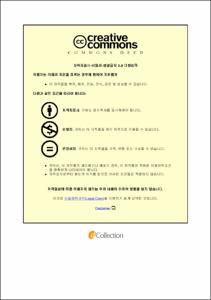A study for genes interacting with the RecQ helicase
- Abstract
- Werner’s syndrome (WS) is an autosomal recessive disorder in humans characterized
by the premature development of age-associated pathologies. WRN, the product of
WRN gene which is defective in WS, plays a key role in protecting genome. The cell
derived from WS patients show genomic instabilities such as telomere shortening. wrn-
1, a Caenorhabditis elegans (C. elegans) homolog of the WRN, was identified and its
mutation also exhibited a shorter life span. Although many biochemical studies of WRN
protein showed its role in DNA metabolism of DNA damage, the defect of WRN
activity is not sufficient to explain several phenotypes of WS. Thus, other additional
cellular deficits may better explain manifestations seen in WS. To study this unsolved
question, we investigated the involvement of wrn-1 in organismal developments by the
use of gene knockout in wrn-1 mutants. Our results showed that wrn-1 acts with either
mre-11 or him-6 during oocyte and embryo developments. When the expression of both
wrn-1 and mre-11 was reduced, larval development was greatly retarded compared with
a single reduction of each gene in the N2 control worms. The reduced expression of
him-6 in wrn-1 mutant resulted in increased embryonic lethality and arrested cell
divisions in embryo. In addition, wrn-1(gk99);him-6(RNAi) or wrn-1(gk99);mre-
11(RNAi) worms displayed multiple chromosomal abnormalities in oocyte nuclei at the
diakinesis stage. These results suggest that WRN-1 functionally interacts with MRE-11
or HIM-6 and its interaction is involved in organismal developments.
- Issued Date
- 2017
- Awarded Date
- 2018-02
- Type
- Dissertation
- Keyword
- Gene interactions; homologous recombination; meiosis; aging
- Affiliation
- 울산대학교
- Department
- 일반대학원 생명과학과
- Advisor
- Prof. Byungchan Ahn
- Degree
- Master
- Publisher
- 울산대학교 일반대학원 생명과학과
- Language
- eng
- Rights
- 울산대학교 논문은 저작권에 의해 보호받습니다.
- Appears in Collections:
- Life Science > 1. Theses (Master)
- 파일 목록
-
-
Download
 200000011637.pdf
기타 데이터 / 1.8 MB / Adobe PDF
200000011637.pdf
기타 데이터 / 1.8 MB / Adobe PDF
-
Items in Repository are protected by copyright, with all rights reserved, unless otherwise indicated.